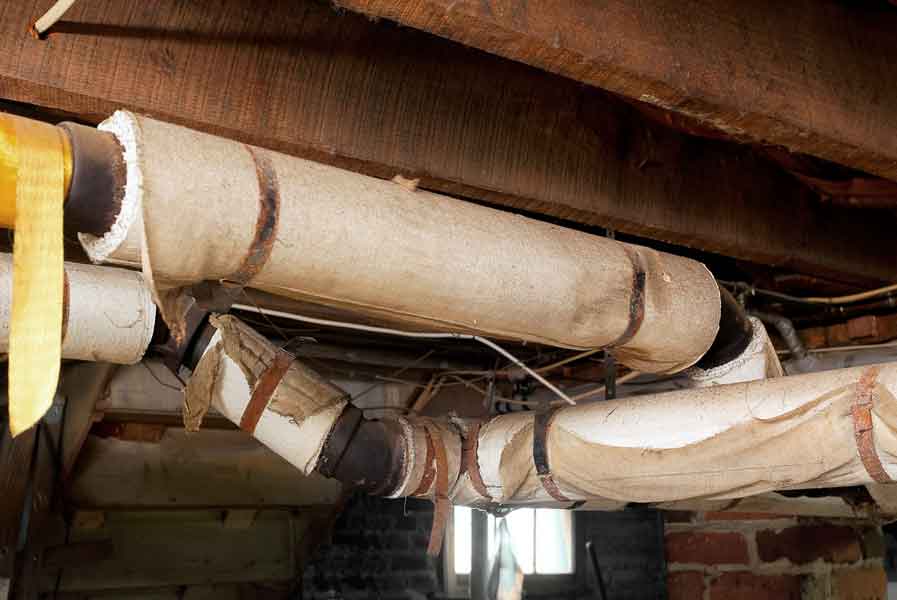Where will you find asbestos in commercial buildings?
Asbestos was a staple building material of the construction industry in New Zealand for over 50 years. As such, if you own or lease a commercial building that was built in the late 1980s or before, there’s a high chance asbestos was used in its construction.
The presence of asbestos in and of itself isn’t necessarily a cause for concern. However, if the material has deteriorated due to damage or wear-and-tear, it could compromise workplace safety.
Any airborne asbestos fibres in an indoor working environment can contribute to serious respiratory issues further down the track - it’s better to be safe and check for asbestos in your business with a thorough survey.
But where will you likely find asbestos in commercial buildings?
Four common locations for asbestos in commercial buildings
Asbestos was favoured in the building sector for its durable, fibrous quality and fire retardant properties. Because of this, it was used in all aspects of constructing, renovating, and maintaining commercial properties nationwide.
This also means asbestos could be present in numerous locations within your commercial building. Here are just four of the most common places you can find the fibrous material.
1) Insulation
Insulation is used in walls, ceilings, and between floors of commercial buildings to preserve and prevent heat from dispersing. While this helps keep us warm during the long winter months, insulation materials were often interwoven with asbestos fibres prior to the material’s ban in the early 1990s. Its fire retardant capability was useful in minimising the chances of a commercial property damage, but subsequently means insulation is one of the first materials you should test for asbestos contamination.
2) Roofs
Used to increase the durability of indoor and outdoor roofing materials, asbestos can very likely be found here as well.
Asbestos was applied as a spray coating to attic ceilings to reduce wear-and-tear on wooden timbers, was regularly mixed with cement to reinforce roof panels, and was used as part of asbestos insulating boards in designing soffits. When checking for asbestos in your roof, use extra care when conducting a survey due to the dangers present when working at height.
Asbestos was a cheap lightweight material for wall panels
3) Flooring, walls and ceilings
Even if you’re certain the structure of your commercial property is made from other materials, the presence of asbestos is more common than you might have thought.
For example, asbestos can be found in vinyl floor and ceiling tiles used regularly in commercial outlets, and is often present in the materials used to construct partition walls. The lightweight design of these walls makes them more prone to deterioration over time, meaning the presence of asbestos in the air is far more likely. Additionally, fibres can be found in the textured coatings used on walls and ceilings, such as artex and stucco.
4) Hot water pipes, tanks and gutters
Asbestos was commonly used to make insulation foam resistant to fire.
The water-resistant qualities of asbestos meant the material was often used in constructing building features where there would be regular contact with moisture. As such, asbestos can be found in boiler lagging (to better insulate the hot water inside), as a reinforcing material for indoor water pipes, and as part of asbestos cement present in external gutters and rain pipes.
While not all piping or boiler equipment on your commercial property will have asbestos in it, it’s important you check these items as a matter of course to ensure your workplace is safe.
What should I do once I’ve identified where asbestos is present?
To be certain the material you’re analysing is asbestos - and to determine the threat to the long-term health of your employees and yourself - you should take an asbestos sample.
This should be done carefully, ensuring you cover your mouth and skin while you take a small sample of the material. Once you’ve taken a sufficient portion (expert opinions vary on the exact amount needed but indicate it should be no smaller than a coin), you can send this away for professional testing. This analysis will help determine if there is asbestos present, and how dangerous any existing material is.
If you’re uncertain or don’t feel confident about collecting a sample yourself, an asbestos survey is an excellent alternative. The expert team at Chemcare can conduct a full on-site analysis of your property, performing a thorough check to see if the common signs of asbestos presence are evident.
Armed with this information - and with further testing conducted in our state-of-the-art lab - we can provide definitive evidence on the location of any asbestos in your building, and the threats posed to your business.
For more information about our asbestos survey, or to learn more about how you can find asbestos in your commercial property, contact the Chemcare team today for assistance.




